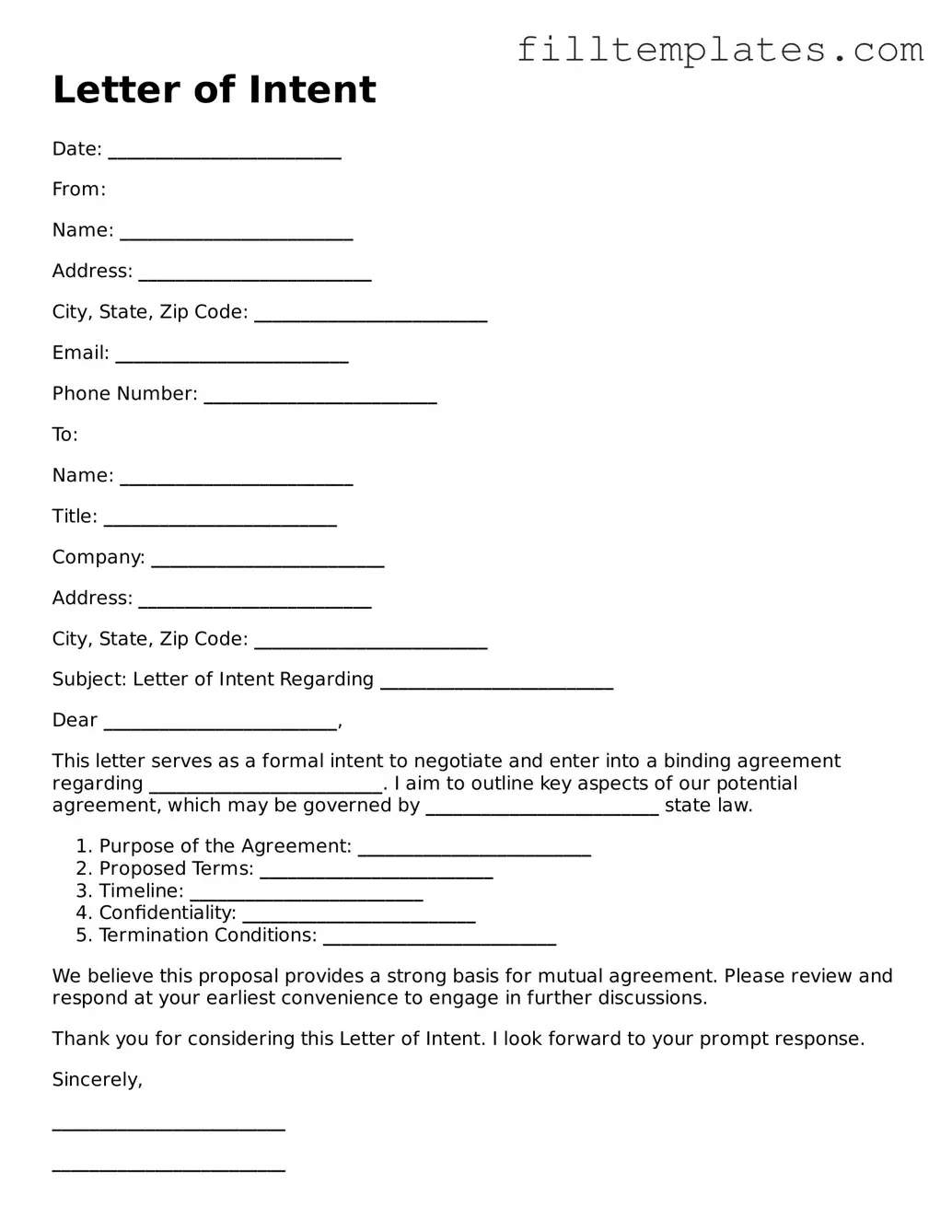Letter of Intent
Date: _________________________
From:
Name: _________________________
Address: _________________________
City, State, Zip Code: _________________________
Email: _________________________
Phone Number: _________________________
To:
Name: _________________________
Title: _________________________
Company: _________________________
Address: _________________________
City, State, Zip Code: _________________________
Subject: Letter of Intent Regarding _________________________
Dear _________________________,
This letter serves as a formal intent to negotiate and enter into a binding agreement regarding _________________________. I aim to outline key aspects of our potential agreement, which may be governed by _________________________ state law.
- Purpose of the Agreement: _________________________
- Proposed Terms: _________________________
- Timeline: _________________________
- Confidentiality: _________________________
- Termination Conditions: _________________________
We believe this proposal provides a strong basis for mutual agreement. Please review and respond at your earliest convenience to engage in further discussions.
Thank you for considering this Letter of Intent. I look forward to your prompt response.
Sincerely,
_________________________
_________________________
